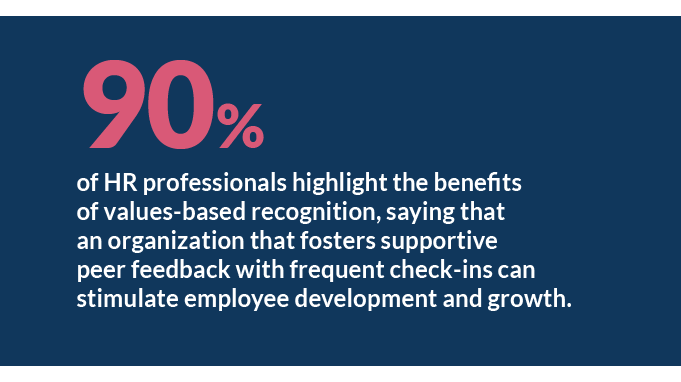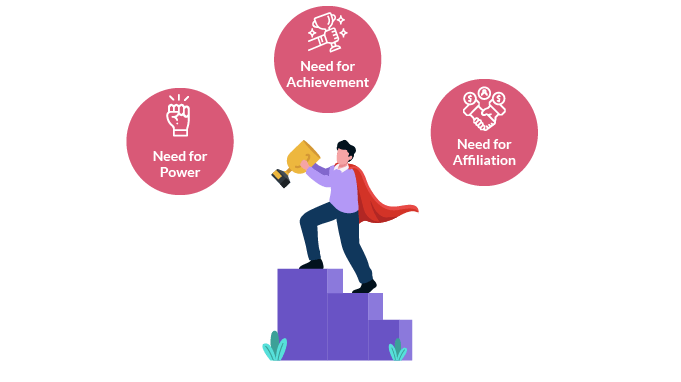Unlocking Employee Motivation- A Comprehensive Guide
Motivation is one prime aspect that keeps your employees glued to your company. You need to understand the functioning of employee motivation, how it works, the theories that ignite motivation, and what companies can do to keep them motivated.
And to know all this, all you have to do is stick throughout with us and understand the nuances that will help you figure out answers to your questions and implement the same.
Key Takeaways
- A proper understanding of employee motivation
- How is employee motivation important and beneficial to the organization
- What are the types of employee motivation
- What are the employee motivation theories
- What are the employee motivation strategies you can apply in the workplace
- How can you measure employee motivation
What is Employee Motivation?
Employee motivation is perceived as the level of commitment, energy, and creativity that the employees are willing to pour into their work regularly. It plays a major role in determining the growth of the company.
Motivated employees go the extra mile to take the lead, get the work done, and contribute to the company's productivity. They serve as examples for the rest of the workforce.
Importance of Employee Motivation
To outshine and make an edge in this fiercely competitive world, you must garner the unwavering support of your employees without fail.
By igniting motivation in them, you not only push them to move forward but simultaneously foster an unbreakable and trustworthy bond in the process that helps them bind to your cause. This empowers them to stay by your side and conquer the goal with precision.
No company, small or large, can win over the long run without energized employees who believe in the mission and understand how to achieve it.
– Jack Welch
Genuinely motivated employees voluntarily engage in the company’s prosperity by contributing, collaborating, and tackling challenges creatively.
In the modern marketplace, where finding the best talent is laborious, a demotivated workforce will only sabotage a company’s potential, lowering morale and end up increasing turnover rates.
According to Gallup, the cost of replacing an individual employee can range from 0.5 to 2 times the employee's annual salary.
This fact serves as a testimony to the idea that employee turnover can wreak havoc on your organization. And retention, being a challenging task, is only possible when it goes hand in hand with staff motivation.
Hence, Today’s dynamic business environment requires leaders and managers who can take suitable measures to motivate their employees.
Benefits of Employee Motivation

Motivated employees are invaluable assets to any organization. And before you take any steps ahead to implement employee motivation strategies, let us explore a range of benefits that employee motivation can tap your organization into-
-
Motivated employees have the zeal to explore and develop themselves in the process. They are always on a learning spree to add new skills to their spectrum and expand their talent pipeline.
-
Motivated employees prefer to think outside the box and undertake risks for innovation. Their priority for innovation over anything banal shows how energetic they become once the curiosity seeps in.
-
Setbacks never demote or discourage motivated employees from chasing their goals. As much as they demonstrate curiosity to undertake risks and challenges, they are all prepared to survey the results that come their way and work toward them.
-
Motivation is the spark that ignites engaged employees, reduces turnover, and yields a workforce invested in the organization's prosperity.
-
It is natural for motivated employees to develop a sense of belonging and pride in the organization, thereby creating a unified and strong organizational identity and culture.
Employee Motivation Statistics That You Should Know

Source: Gallup/Workhuman survey

Source: HR professionals

Source: Unmotivated employees

Source: SHRM study
Types of Employee Motivation
Two types of motivation drive employees in the workplace. Let us delve into the types in detail and figure out how they function in the workplace.
| Intrinsic | Extrinsic |
|---|---|
| Intrinsic motivation is a form of motivation that originates internally. | Extrinsic motivation, on the other hand, originates from an external source. |
| It is driven by deep-rooted desires and internal rewards such as enjoyment of work, a sense of purpose, and the opportunity to learn and grow. | This type of motivation is mostly tangible in nature. When a reward is attached to a task, employees are extrinsically motivated to do it. |
| Employers can foster intrinsic motivation by providing interesting and challenging work, autonomy, and alignment with employees' values. | Employers can provide extrinsic motivation through pay raises and other benefits. The benefit of this motivation is you can make services direct and quantifiable. |
Although they exist separately as the igniting factors in employees, we cannot totally deny the potential they can tap into when merged.
A balance of intrinsic and extrinsic motivation is the key to creating optimal, long-lasting employee motivation.
Employee Motivation Theories
Motivation theories delve into the study of understanding and learning behind what inspires a person to chase a specific purpose and result. The theories are prevalent in multiple disciplines like psychology and sociology and are also significant for businesses, particularly concerning management.
Studying the theory will help you learn and understand about the actions that motivate people to work harder, whether through internal or external factors.
With respect to management, professionals use motivation theories to primarily increase production, profits, employee retention rates, and employee satisfaction levels. Let us delve into motivation theories in the section below.
1. Incentive Theory

The incentive theory perceives reinforcements, recognition, and rewards as significant incentives that majorly motivate people. The theory further proposes that people may display certain behaviors to achieve a specific result, trigger a particular action, or receive a reward.
Employers can use incentives to motivate employees to achieve organizational goals and desired outcomes. These incentives can take the form of bonuses or commissions for meeting targets, exceeding productivity goals, or completing priority projects. Non-monetary rewards like additional paid time off, gift cards, or public recognition can be reserved for top performers.
2. McClelland’s Need Theory

Named after Harvard professor David McClelland, the theory proposes that humans have three kinds of emotional needs: power, achievement, and affiliation. He found that one particular need is often dominant, but people can have a blend of these needs. The needs that drive them are affected by the needs that are important to them.
The Three Needs Theory is often put to use in businesses to create personality tests to determine what motivates employees. It further helps managers learn more about the individuals in their team and determine what the individuals need from the workplace.
3. Competence Theory
The theory proposes that people wish to engage in certain activities that allow them to display their skills and intelligence.
In the business context, if employees successfully demonstrate their intelligence among peers, it can motivate them to feel competent in a particular area. This feeling of competence in them may expand their confidence in performing their tasks and improve productivity and efficiency.
4. Expectancy Theory
The expectancy theory proposes that people tend to perform certain behaviors if they perceive that those actions yield desirable outcomes.
Managers can apply the expectancy theory in the workplace to improve their team’s efforts, efficiency, and productivity.
Here are some ways managers can execute the essence of the theory in the workplace:
- Create goals that are challenging but achievable as well.
- Ensure that the tasks assigned to the team members match their skill sets.
- Communicate the expectations and the rewards clearly by establishing a connection between them.
- Ensure fair and logical distribution of rewards among the members.
5. Maslow’s Hierarchy of Needs Theory

Maslow’s hierarchy of needs is a psychological theory that explains the different kinds of needs people are urged to fulfill before focusing on more advanced needs. The hierarchy comprises requirements framed into a pyramid of five levels, which are as follows.
-
Physiological: This level focuses on meeting basic survival needs such as shelter, food, clothing, and adequate water. In a work setting, employees seeking a decent salary falls under physiological needs.
-
Safety: This level focuses on the need to feel protected. In the workplace, this particular need may arise from the idea of prioritizing safety owing to the involvement of job security.
-
Socialization: Socialization needs derive from the desire to be socially agile and active, develop friendships, and develop a sense of belonging. A workplace can fulfill the need by creating opportunities for employees that allows them to bond through team-building activities and team lunches.
-
Esteem: This is a typical human desire to be accepted, valued, and respected. In a workplace context, employees start developing this particular need when targets reach a level by receiving recognition. This makes them feel confident in their work and increases their self-esteem.
-
Self-actualization: At this level, people realize and come to terms with their full potential. To reach this level, employees try their best to achieve long-term personal or complex goals. Employees who have attained self-actualization may also feel motivated to complete workplace goals effectively.
The most significant takeaway for an employer is that the basic needs must be in place before anything else.
Each tier is built on the other, so employers should first concentrate on meeting the basic requirements and ensure that everyone is adequately paid and has safe working conditions and job security.
Then, consider ways to make work more rewarding through job enrichment, cross-training, and special projects.
Employee Motivation Strategies

Now that you have set up the company of your dreams and hired talented people, you need to hold on to them. And while money might seem like a feasible way to hold them, but research shows it’s simply not enough.
A lot of other factors go into motivating an employee.
True motivation comes from achievement, personal development, job satisfaction, and recognition.
– Frederick Herzberg
Below are some significant employee motivation factors you need to consider implementing.
1. Compensate with Pay and Perks

Timely appraisals and salary hikes are important in employee motivation. And while it is important, it is not always enough.
According to a Glassdoor survey, nearly 79% preferred new or additional benefits to a pay increase.
Moreover, with millennials entering the workplace, having a diverse benefits package is important.
This generation focuses a lot more on the meaning of their work than the salary they get for that work. Therefore, non-monetary incentives hold a different and higher value among employees.
Some popular non-monetary incentives are:
- Rewards and recognition,
- Flexible work culture,
- Training opportunities,
- Feedback culture,
- Wellness solutions.
2. Celebrate Big and Small Milestones

No hard and fast rule says only big achievements should be acknowledged. Instead, acknowledging small milestones keeps employees motivated in their day-to-day activities.
Apart from your yearly and quarterly goals, make sure to keep track of weekly or monthly goals. They don’t have to be KPI-oriented but can be relevant to social, cultural, and personal development.
Celebrating milestones is the key to understanding the challenges that plague your employees while working. Meeting a milestone gives you an opportunity to assess the hurdles or obstacles blocking your team’s progress and address them accordingly.
3. Encourage Problem-solving and Learning

Your support and guidance are essential for the employees. However, you should create a safe space for the employees that allows them to brainstorm and implement their ideas and solutions.
This will make them feel they have their fair share of valued skills and their contribution to the company’s ambitions.
Of the 560 employees surveyed in Deloitte’s Talent 2020 report, 42% of respondents looking for a new role believed their current job did not use their skills and abilities well.
Nurturing a culture of problem-solving makes them believe that you are open to their ideas, acknowledge their skills, and encourage and promote self-learning.
This, in turn, allows them to take ownership of their work and helps create a space where failure is accepted and undertaken as a learning opportunity.
4. Prioritize and Promote Communication

Most often, employee-employer relationships turn sour solely because of miscommunication. Employees aren’t clear on what their leaders want. And employers get disappointed when they don’t receive the expected results.
Hence, everything must be clear, concise, and transparent between the parties involved. Being the employer, you can start off as soon as you onboard. When you hire them, give them a proper overview of company policies, rules, and objectives.
As time goes by, include them in everything you do that is relevant to them. Be transparent, let them know of the new things you plan to do, and pass on ideas. This will make them feel involved and keep them motivated throughout.
5. Reward and Recognise Your Employees

Appreciation is a fundamental human need. When you attach a reward to work, everyone gets automatically motivated.
Ensure to recognize not only your employees’ results but also their efforts. Recognizing their efforts gives them the zeal to work harder and deliver their best performance. As a result, the employees receive a boost in their motivation levels.
They get the urge to work harder and make genuine contributions. It will also make them stick with your company in the long run.

6. Encourage Peer-to-Peer Motivation

Peer motivation is one of the most effective forms of employee motivation.
Employees form the culture of an organization. And when you hire an employee, it is important to check if he/she will fit in that culture. You should consider whether they’ll be able to work in a team, be helpful to others, and engage in open communication.
Moreover, employees are also each other’s biggest motivators. It is important that those working around you are supportive of you, where they appreciate your efforts, share praise, and take responsibility for their actions.
7. Give Employees a Sense of Purpose

Sometimes, your employees might feel clueless or unsure about their objectives and goals, whether their work serves any of their life's purposes. Once the doubt sets in, employees are bound to feel demotivated and discouraged.
Vlad Moldavskiy of Mabbly, LLC says, “I can motivate my employees by giving them a purpose.” This helps employees envision and connect company goals to larger societal purposes and understand their own purpose as to how they fit into the culture.
Here are some of the ways through which you can instill a sense of purpose in your employees.
- Empower employees with career development opportunities.
- Measurement of personal and professional employee growth.
- Make employee collaboration a common and regular practice.
- Recognizing employees for their contributions.
8. Flexible Work Arrangements

You can develop ideas to ensure a work-life balance for your employees. Allowing them to exercise flexibility in work arrangements is the surest way to help them attain a work-life balance and keep them engaged and dedicated.
Offering them remote work options, flexible schedules, and compressed work weeks will aid you in boosting their staff's motivation levels and keeping them satisfied.
9. Health and Well-being Programs

As a leader, you know that your employees' well-being is crucial for motivation and engagement. Employees who feel supported and cared for will be more positive and motivated to deliver their best work. Investing in their overall wellness builds trust where people feel empowered to thrive.
When you show your team you value them, they will repay you with loyalty, creativity, and genuine efforts. You can prioritize their health and happiness by providing gym memberships, mental health resources, and fun wellness workshops.
How to Measure Employee Motivation

Measuring employee motivation can look like a herculean task for interpreting subjective elements like personal attitudes and feelings. Nonetheless, several methods provide insight into employees' motivation levels at work. Let us dive deep into them.
1. Surveys and Questionnaires
These surveys cover questions about job satisfaction, work-life balance, and career development opportunities. To capture a range of responses, it is best to use both qualitative (open-ended) and quantitative methods (ratings, rankings)
2. One-on-One Meetings
One-on-one meetings with employees give you deeper insights into what motivates or demotivates them at work. The managers or the HRs can lead by asking questions about their work experience and their views on areas that could be improved.
3. Employee Performance Metrics
Try to look for correlations between motivation and performance. Higher productivity, lower error rates, and consistency in meeting and exceeding targets overall indicate higher motivation levels.
4. Engagement Levels
You need to monitor how employees are engaged in their work and the company as a whole. Gauge their participation levels in team meetings, contribution to new initiatives and projects, and involvement in company culture and events.
5. Absenteeism and Turnover Rates
Higher rates of absenteeism or employee turnover indicate low motivation levels. People who frequently miss and avoid work could indicate that they’re not motivated to be part of the company.
6. Training and Development
Employees who are motivated seek training and development opportunities. An employee investing time into learning new skills is a strong sign of motivation, where they are willing to improve and grow in their role.
Conclusion
By now, it must be crystal clear to you that employee motivation has a major role in determining the future and fate of your company. The more the employees feel engaged or emotionally invested in their work, the more motivated they are to stay with the company and align with the goals.
Now, it is your call to consider implementing the measures and bring out the utmost potential in your employees.


















